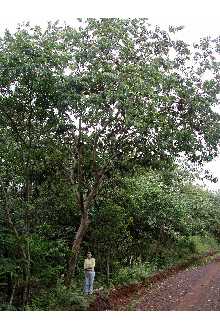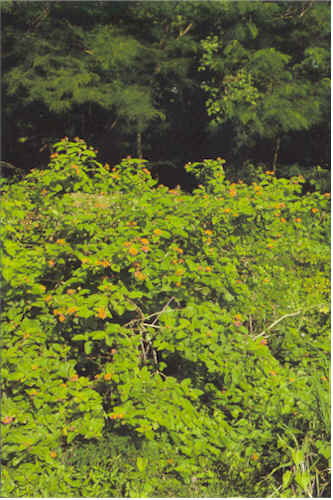General Facts and Characteristics
of Invasive Species
The following information is taken from Cox (2004).
Invasives are almost invariably preadapted for dispersal into new areas.
These adaptations include natural, evolved characteristics such as
· spores, seeds, and larval stages that can
easily be carried by wind or water. In these stages the organism can survive
for long periods of time before reaching a new region where they can grow
and reproduce. Plant pathogen spores such as rusts or other types of fungi
can be carried across oceans
· duckweeds, and floating plants in general,
can break into multiple sections. These parts are carried by currents to
new places, where they grow into the entire plant and multiply
· plants and weeds with burrs, hooks, or awns
get tangled up in animal fur, and are thus taken to wherever the animal
goes
However, these techniques are most effective within an island or across
continental areas. Dispersal across major oceans involves human aid.
· seeds stick to, and are carried by, all
types of vehicles including planes, trucks, and cargo ships. Ballast water
has introduced about 35 species of fish to new regions in the world
· crop seed contaminants are shipped all over
the world
· insects will go wherever shipments of food
are imported
Cropland weeds that have evolved to have seeds and growth patterns
similar to those of crop plants are called agroecotypes. In some cases
the weed seeds are harvested with the crop seeds, and subsequently planted
and carried to new regions. One example of crop mimicry is vetch (Vicia
sativa), with flat seeds that mimic lentil (Lens esculenta)
seeds.
Humans have deliberately introduced new species into regions for the
following reasons:
· agricultural, ornamental, medicinal,
or herbal
· trees are introduced for timber and fuel,
or to serve as windbreaks
· domestic animals are introduced as livestock
· game fish
· invertebrates are introduced for aquaculture
or display aquariums
Upon reaching a new region, invasive species need to establish a stable
population. These characteristics allow them to do that:
· alien weeds can self-fertilize and are apomictic
(meaning they can produce seeds without fertilization)
· small seed size, which means smaller DNA
content, smaller cell volume, and higher seed number. These seeds are lighter
and better adapted for dispersal; they also have shorter generation time
and higher germination rates
· many of the most successful invasive animals
eat a variety of foods, adapt easily to physical conditions, are r-selected
species (small body size, short lives, large number of individuals born
at a time), and exhibit type III survivorship curves
Oceanic islands, many of which lack large land herbivores or predators,
are particularly susceptible to alien plants. Alien plants make up 20% to
over 80% of the flora on many oceanic islands. The enemy release hypothesis
states that by invading lands far away from their original habitat, plants
leave behind the main herbivores that used to feed on them. It will take
time before the herbivores of the new habitat will begin to feed on the alien
plants, so in the meantime the invasive plants will multiply under minimal
stress. A study showed that purple loosestrife, native to Europe, grew taller
and had more biomass than those living in Europe. Phenolic compounds, which
are used to repel herbivores, existed in lower concentrations in North American
loosestrife.

